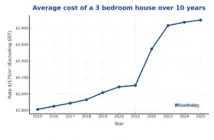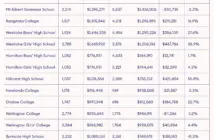
A nearly five-year-old liquidation process is now before the High Court in a collective action lawyers say could be precedent-setting for the construction and subcontractor industry. At issue is $2.1 million in retention funds after Stanley Construction Limited and Stanley Construction (Auckland) were placed into liquidation on 5 September 2019. However, none of that retention money has reached subcontractors, whose invoices remain unpaid.
Payments remain outstanding to approximately 200 subcontractors who are represented by the action, which is being funded by industry organisation Master Electricians and led by Wellington-based legal firm Ford Sumner Lawyers.
Although the liquidator Damien Grant of Waterstone Insolvency was able to recover a substantial sum from the directors of the liquidated companies, he has claimed that those monies can be treated as company assets of Stanley and are subject to being fully absorbed by liquidator fees.
In comparable cases in the past, individual subcontractors have been unable to fund legal action to try to recoup what they were owed. However, in the pursuit of a decision as to how Stanley retention funds were held and whether the liquidators’ costs are valid, Master Electricians has backed Ford Sumner Lawyers to take the Stanley matter to the High Court.
Ford Sumner made an application for the court to review the liquidators’ actions and to appoint replacement liquidators to administer the retention monies. The current liquidators are opposing the claim.
The issue of lost retentions has plagued the industry for years, with the most high-profile example being the Mainzeal collapse in 2013, which left at least $18 million owing to subcontractors in retentions, or partial payments owed for work completed.
Legislation should protect subcontractors, but it is not yet clear to what proportion the approximately $2.1 million of cash retentions that have been withheld by the Stanley companies were required to be held on statutory trust under the Construction Contracts Act 2002.
The Construction Contracts (Retention Money) Amendment Act 2023, which mandates that retention money be held in trust in a separate bank account, did not come into effect in time to be relevant to the Stanley liquidation. Likewise, penalties for directors who fail to ringfence retentions came into effect too late, in October 2023.
Master Electricians CEO Alexandra Vranyac-Wheeler says, “We are funding this case because we want to see meaningful and lasting change in the sector. For years subcontractors have taken on unacceptable risk and had no choice but to walk away from unpaid invoices in cases of liquidation. In the Stanley case, each subbie might be owed a smallish amount, perhaps $30,000, so it is uneconomical for any individual to take a case on their own.
“This collective action is a great opportunity to pursue a High Court judgment that changes things for the better. We want to set a new precedent for the industry in New Zealand. If we get a clear ruling about the use of retention funds, this will be equally applicable for the members of other industry bodies, such as Master Builders and Master Plumbers, so it is potentially far-reaching, and the liquidators of the future will be on notice.”
Ford Sumner Lawyers says, “Retention money is usually the subbies’ profit, so it is extremely important that it is protected. The industry has repeatedly seen retentions subjected to abuse and misuse, which is why the Construction Contracts Act was beefed up again in 2023 because there was concern about lack of compliance.
“This case is about the use of retentions by the liquidator. Traditionally, as we have seen with some liquidations, retentions have been treated as a cash or lolly grab for liquidator fees. We are asking the High Court to review the Stanley matter and decide whether it is permissible for a liquidator to treat the money received from the directors as a salvage right.”



